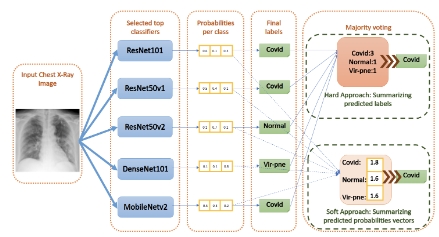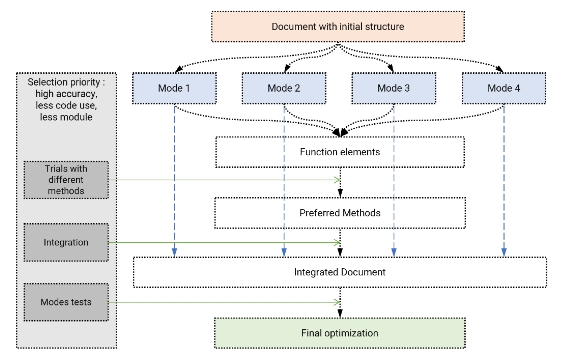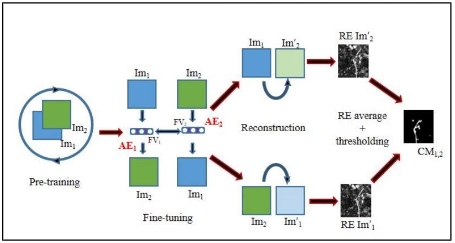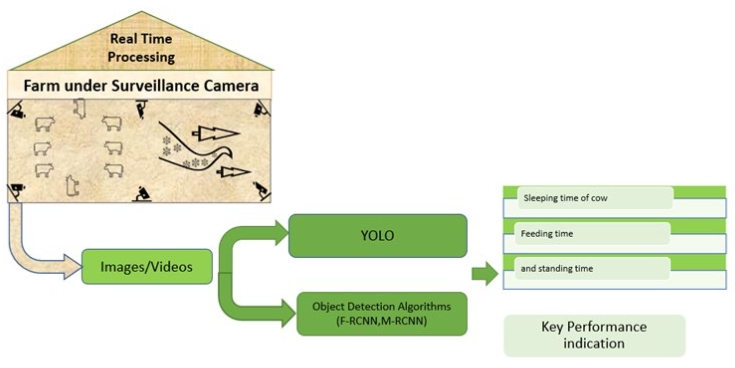Plant leaf disease classification using FractalNet
Abstract
In this work, an effort is made to apply the FractalNet model in the field of plant disease classification. The proposed model was trained and tested using a “PlantVillage” plant disease image dataset using a central processing unit (CPU) environment for 300 epochs. It produced an average classification accuracy of 99.9632% on the test dataset. The experimental results demonstrate the efficiency of the proposed model and show that the model achieved the highest values compared to other deep learning models in the PlantVillage datasets.
References
[1]Lu Y, Yi S, Zeng N, et al. Identification of rice diseases using deep convolutional neural networks. Neurocomputing. 2017; 267: 378-384. doi: 10.1016/j.neucom.2017.06.023
[2]Chen J, Zhang D, Nanehkaran YA, et al. Detection of rice plant diseases based on deep transfer learning. Journal of the Science of Food and Agriculture. 2020; 100(7): 3246-3256. doi: 10.1002/jsfa.10365
[3]Sun J, Tan WJ, Mao HP, et al. Identification of Leaf Diseases of Various Plants Based on Improved Convolutional Neural Network. Agric. Eng. Newsp. 2017; 19: 209-215.
[4]Mohanty SP, Hughes DP, Salathé M. Using Deep Learning for Image-Based Plant Disease Detection. Frontiers in Plant Science. 2016; 7. doi: 10.3389/fpls.2016.01419
[5]Too EC, Yujian L, Njuki S, et al. A comparative study of fine-tuning deep learning models for plant disease identification. Computers and Electronics in Agriculture. 2019; 161: 272-279. doi: 10.1016/j.compag.2018.03.032
[6]Atila Ü, Uçar M, Akyol K, et al. Plant leaf disease classification using EfficientNet deep learning model. Ecological Informatics. 2021; 61: 101182. doi: 10.1016/j.ecoinf.2020.101182
[7]Alaeddine H, Jihene M. Plant leaf disease classification using Wide Residual Networks. Multimedia Tools and Applications. 2023; 82(26): 40953-40965. doi: 10.1007/s11042-023-15226-y
[8]Alaeddine H, Jihene M. Deep Batch-normalized eLU AlexNet for Plant Diseases Classification. In: 2021 18th International Multi-Conference on Systems, Signals & Devices (SSD); 22 March 2021. doi: 10.1109/ssd52085.2021.9429404
[9]Cruz AC, Luvisi A, De Bellis L, et al. Vision-based plant disease detection system using transfer and deep learning. In: Proceedings of the 2017 Asabe Annual International Meeting; 16-19 July 2024; Washington.
[10]Yamamoto K, Togami T, Yamaguchi N. Super-Resolution of Plant Disease Images for the Acceleration of Image-based Phenotyping and Vigor Diagnosis in Agriculture. Sensors. 2017; 17(11): 2557. doi: 10.3390/s17112557
[11]Wallelign S, Polceanu M, Buche C. Soybean Plant Disease Identification Using Convolutional Neural Network. In: Proceedings of the Thirty-First International Florida Artificial Intelligence Research Society Conference (FLAIRS-31). pp. 146-151.
[12]Sibiya M, Sumbwanyambe M. A Computational Procedure for the Recognition and Classification of Maize Leaf Diseases Out of Healthy Leaves Using Convolutional Neural Networks. AgriEngineering. 2019; 1(1): 119-131. doi: 10.3390/agriengineering1010009
[13]Rangarajan AK, Purushothaman R, Ramesh A. Tomato crop disease classification using pre-trained deep learning algorithm. Procedia Computer Science. 2018; 133: 1040-1047. doi: 10.1016/j.procs.2018.07.070
[14]Zhang K, Wu Q, Liu A, et al. Can Deep Learning Identify Tomato Leaf Disease? Advances in Multimedia. 2018; 2018: 1-10. doi: 10.1155/2018/6710865
[15]Hu G, Wu H, Zhang Y, Wan M. A low shot learning method for tea leaf’s disease identification. Computers and Electronics in Agriculture. 2019; 163. doi: 10.1016/j.compag.2019.104852.104852
[16]Hughes DP, Salathe M. An open access repository of images on plant health to enable the development of mobile disease diagnostics. arXiv. 2015; arXiv:1511.08060.
[17]Larsson G, Maire M, Shakhnarovich G. Fractalnet: Ultra-deep neural networks without residuals. arXiv. 2016; arXiv:1605.07648.
[18]He K, Zhang X, Ren S, Sun J. Deep residual learning for image recognition. arXiv. 2015; arXiv:1512.03385.
[19]Gadekallu TR, Rajput DS, Reddy MPK, et al. A novel PCA–whale optimization-based deep neural network model for classification of tomato plant diseases using GPU. Journal of Real-Time Image Processing. 2020; 18(4): 1383-1396. doi: 10.1007/s11554-020-00987-8
[20]Saberi Anari M. A Hybrid Model for Leaf Diseases Classification Based on the Modified Deep Transfer Learning and Ensemble Approach for Agricultural AIoT-Based Monitoring. In: Kumar A (editor). Computational Intelligence and Neuroscience. 2022; 1-15. doi: 10.1155/2022/6504616
Copyright (c) 2024 Hmidi Alaeddine, Malek Jihene

This work is licensed under a Creative Commons Attribution 4.0 International License.










